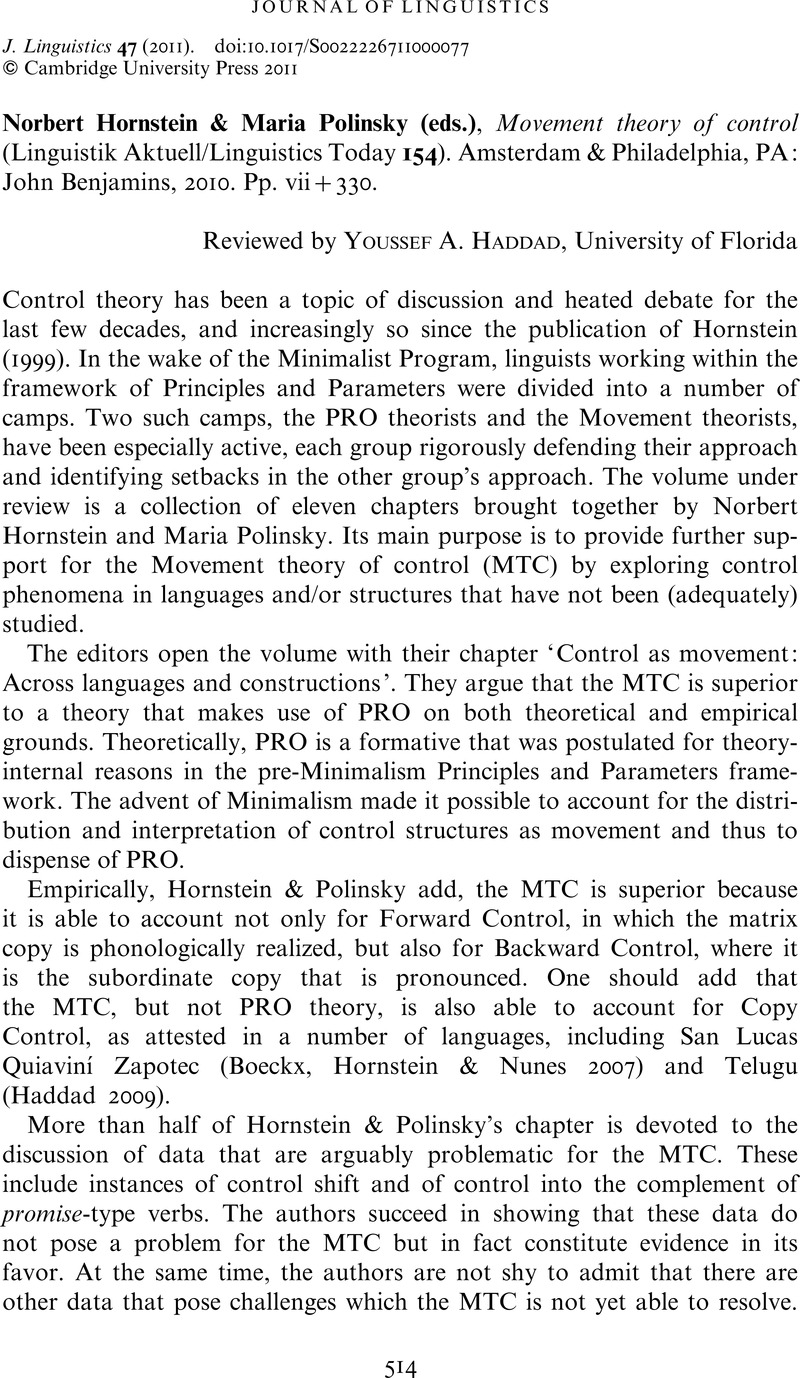No CrossRef data available.
Article contents
Norbert Hornstein & Maria Polinsky (eds.), Movement theory of control (Linguistik Aktuell/Linguistics Today 154). Amsterdam & Philadelphia, PA: John Benjamins, 2010. Pp. vii+330.
Published online by Cambridge University Press: 03 June 2011
Abstract
An abstract is not available for this content so a preview has been provided. Please use the Get access link above for information on how to access this content.

- Type
- Reviews
- Information
- Copyright
- Copyright © Cambridge University Press 2011
References
REFERENCES
Boeckx, Cedric, Hornstein, Norbert & Nunes, Jairo. 2007. Overt copies in reflexive and control structures: A movement analysis. University of Maryland Working Papers in Linguistics 15, 1–46.Google Scholar
Haddad, Youssef A. 2009. Copy Control in Telugu. Journal of Linguistics 45.1, 69–109.CrossRefGoogle Scholar
Haddad, Youssef A. 2010. Why things may move: Evidence from (circumstantial) control. Journal of South Asian Linguistics 3.1, 45–63.Google Scholar
Haddad, Youssef A. 2011. Control into conjunctive participle clauses: Evidence from Assamese. Berlin: Mouton de Gruyter.CrossRefGoogle Scholar
Hornstein, Norbert. 1999. Movement and control. Linguistic Inquiry 30.1, 69–96.CrossRefGoogle Scholar
Landau, Idan. 2004. The scale of finiteness and the calculus of control. Natural Language & Linguistic Theory 22.4, 811–877.CrossRefGoogle Scholar
Landau, Idan. 2007. Movement-resistant aspects of control. In Davis, William & Dubinksy, Stanley (eds.), New horizons in the analysis of control and raising, 293–326. Dordrecht: Springer.CrossRefGoogle Scholar
Langacker, Ronald W. 2007. Constructing the meanings of personal pronouns. In Radden, Günter, Köpcke, Klaus-Michael, Berg, Thomas & Siemund, Peter (eds.), Aspects of meaning construction, 171–188. Amsterdam & Philadelphia, PA: John Benjamins.CrossRefGoogle Scholar
Polinsky, Maria & Potsdam, Eric. 2002. Backward control. Linguistic Inquiry 33.2, 245–282.CrossRefGoogle Scholar
Portner, Paul & Zanuttini, Raffaella. 2005. Clause typing: From syntax to discourse semantics. Class handout at 2005 LSA Institute, MIT.Google Scholar
San Martin, Itziar. 2004. On subordination and the distribution of PRO. Ph.D. dissertation, University of Maryland.Google Scholar




